A Raphael of Love
You who know what love is...
Cherubino’s heartfelt, anxious questioning of Mozart’s limpid melody can hardly propose itself before the dazzling Raphael Exhibition at the Scuderie del Quirinale. It nevertheless contorts every visitor through the unbearable beauty poured out by the young man from Urbino in the innumerable masterpieces of his multifaceted art. Thus the intimate question as to whence comes that prehensile and total feeling that emanates from the intact drawings and sublime paintings requires a secret reason, a fulfillment of the heart that the eyes incessantly feed. And it is answered with stupendous simplicity by Marzia Faietti, refined and profound curator, in her propositional and disarming commentary: To approach Raphael is a very easy thing, because he is the author of a complex art, but at the same time capable of communicating himself to everyone. His painting contains so many levels that every observer, from the simplest to the most educated has the opportunity to admire it. Raphael is an artist for everyone. It is the secret of the language of every truthful genius: it is a language substantiated by love!
Immersion in the exhibition tightens one’s thoughts from the beginning with the universal commotion over the death of the young artist. A loss one wishes impossible, calling intellect and senses to denial for reasons of life, equal to that which struck the world five hundred years ago. And one proceeds slowly (at the ancient pace of doubting lovers) to grasp his legacies, to find the consolations of his legacy. And here are the astonishing halls of the Scuderie, rhythmically paced with skillful mastery and philological rigor by Marzia Faietti and Matteo Lafranconi (the two curators) that open the majestic symphony of an incomparable career, unique in the history of our civilization, which at each stage reveals roots and moods elaborated by the previous steps, thus weaving the extraordinary, extremely rich continuum that entails all the depth of creativity, poetry, biblical and secular culture that the Italian Renaissance had been able to produce.
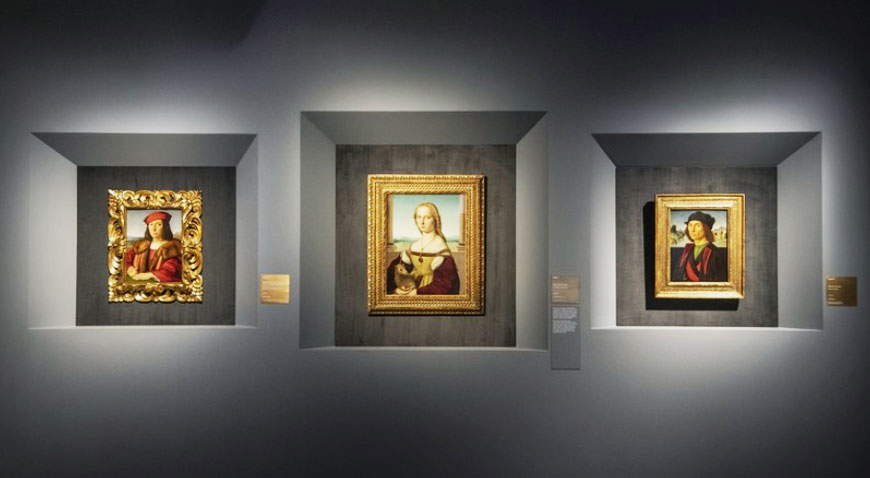 |
| A room in the exhibition Raphael 1520-1483 in Rome, Scuderie del Quirinale |
Yes, Raphael is the novella Matilda who chooses flower blossoms; he is the Midas (amorous and courtly) who turns everything into gold, that is, who makes everything in nature marvelous: the skies, the vegetables, the fabrics and the jewelry, but mainly the bodies, the human bodies and faces that are the unspeakable harmony of creation, stretching out in the grace of flesh, gestures, smiles and even otherness. All with the varying palettes of colors: the most radiant, the most caressing and soft, the most tactile and never elusive. In him nature and culture merge on an immortal level giving the results of his motile hand (which we must always imagine tirelessly making chromatic mixtures and moving the brush from the first light of dawn) and realizing what is “ineffable,” since it seems to have flown higher than thought itself.
A great deal of literature and exegesis has been poured out on Raphael, and now the Catalogue of the Exhibition fills other spaces, presenting us with other wonders. Certainly the impressive vastness and complexity of his frescoes (which of course remain in situ) adds a great deal to his poem and glory, and a most instrumental, perhaps now saturated, explication is in force on them. But it is very worthwhile, of preserves to the Exhibition, to visit the Vatican Rooms, and in the Museums the sublimating Transfiguration. It is worth a visit to the Farnesina, the ancient villa of Agostino Chigi, where Sanzio’s inspiration passes from the astonishing majesty and grace of Galatea to the glittering stream of the instories of Cupid and Psyche, amid a vegetal riot of garlands and flowers. More important still would be the acute, knowing, meditative observation on the Sibyls frescoed in the arch of the Chigi Chapel in Santa Maria della Pace: a truly unique masterpiece, left in penumbra by a long, difficult, access and a kind of stylistic, as well as semantic, disregard. But it is here that the ecstatic Perugian steadfastness of the Urbino arrived in Rome in a felicitating fluency and in a total compositional bond made of flexed, harmonious, opposing rhythms: here in the angelic-pagan dance of the divine announcement rises a beautiful musical score of forms and colors, and movements, which will later be an effective reserve for the artist himself, and which cannot be forgotten. In Santa Maria della Pace among the joyful prophetesses and the Latin-faced Sibyl holding up the momentous proclamation(iam nova progenies coelo demittitur alto) Raphael achieves that comitas serenissima between mythology and Christianity that is his typical and admirable marriage between classicism and human effusion: an exemplum that cannot fail to find a secret thread in the soul of Correggio: one of the fresco’s earliest admirers.
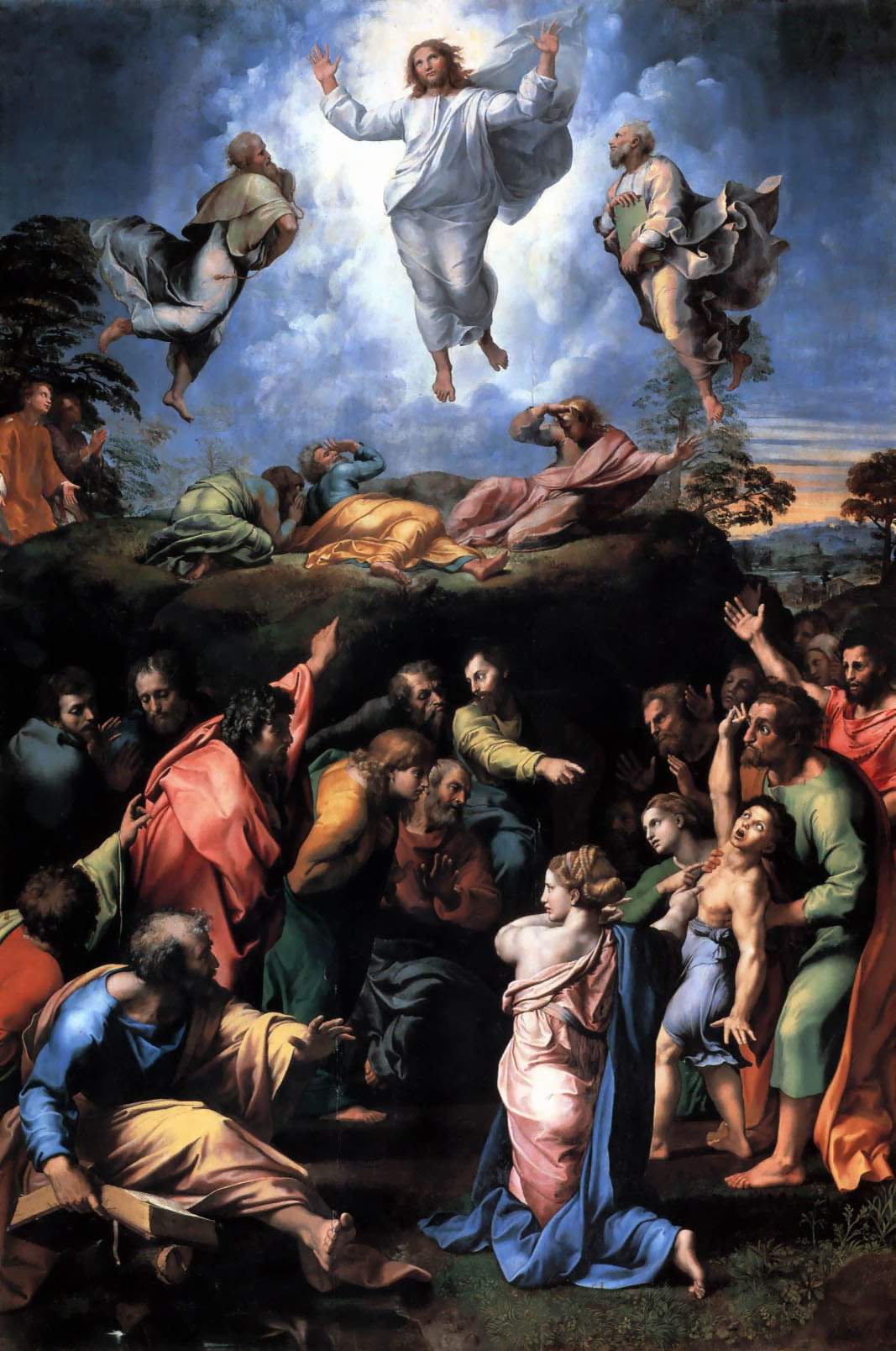 |
| Raphael, Transfiguration (1518-1520; tempera grassa on panel, 410 x 279 cm; Vatican City, Vatican Museums, Pinacoteca Vaticana) |
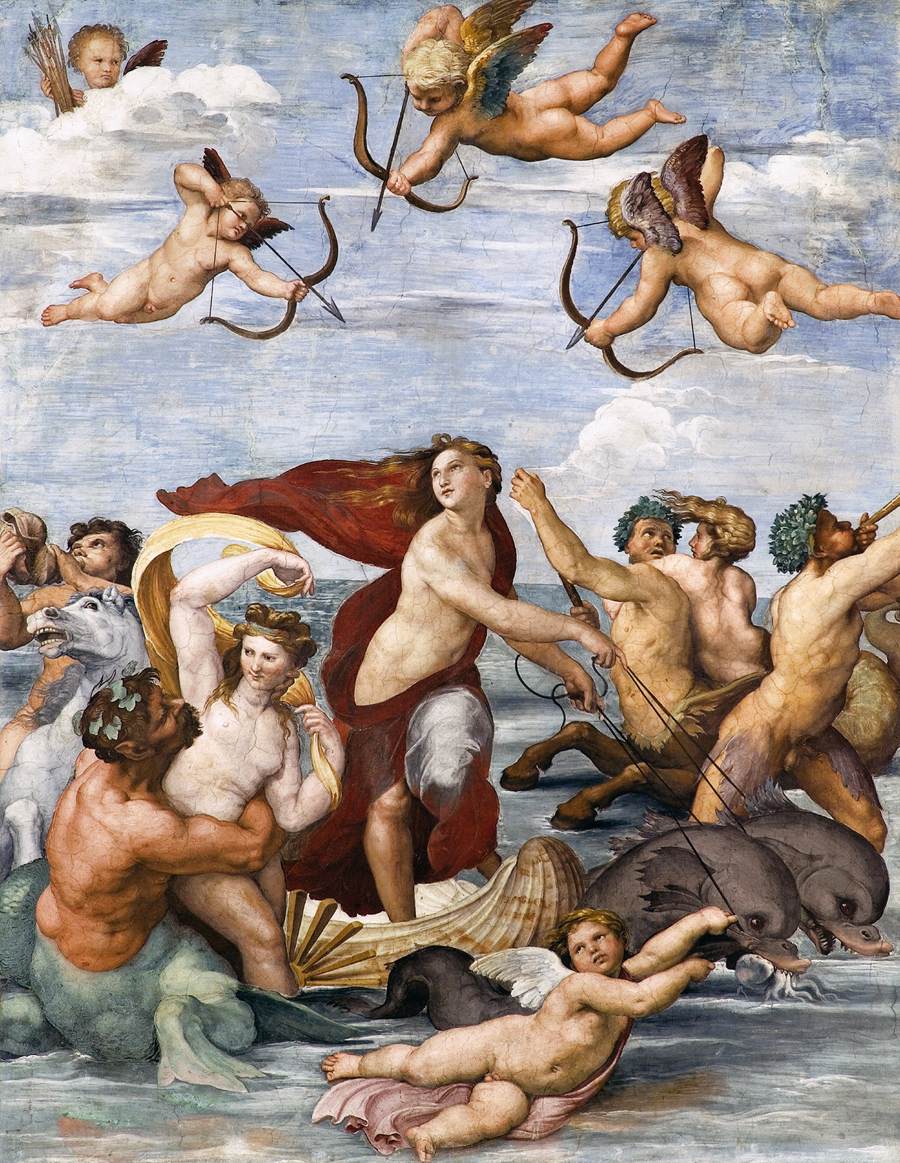 |
| Raphael, Triumph of Galatea (1512; fresco, 295 x 225 cm; Rome, Villa Farnesina) |
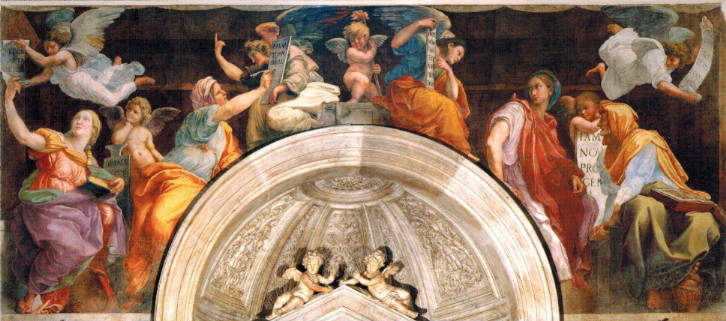 |
| Raphael, Sibyls and Angels (1514; fresco, 615 cm long; Rome, Santa Maria della Pace) |
Returning to the exhibition (amid Madonnas of supreme venusty, enchanting altarpieces, and prodigious portraits) let us not forget Sanzio’s strength in establishing spatial depths, the inescapable volumetric compactness of his figures in chromatic chiaroscuro, and his vocation for architecture as the staple of every composition, even to the point of being an explicit profession for building concreteness, always commendable in the heart of the Renaissance. Of Raphael, a cultivator “of ancient things” speak his exegetes, from Vasari to Salvatore Settis, to whom we refer for fundamental and corroborating wisdom, still necessary today.
We would like to close with a reminder that is nevertheless a tribute to the extreme and masterful sensitivity of Antonio Paolucci, the great cantor of Raphael, capable of pointing out to each of us the need for the minute, and for this reason astounding, observation of every even small detail of the paintings: the grasses and leaves, the mimicked subjects, the reflections contained and deferred in the glass, bronzes and jewelry, the tiny wrinkles in faces, the unexpected depths of transparencies in human eyes, the nuances everywhere: all these minimums that only a supreme Master could arrange, execute and love for the totality of art!
Final curiosity: the book-shop offers at a certain price an exhibition purse on which one can see the strong enlargement of a feminine habit: it comes from the famous Velata who wears her black hair and above it protrudes from her headgear a small jewel formed by two precious jewels, a ruby and a diamond that (as Silvia Malaguzzi notes in one of her vivid readings) are “cut at the table,” that is, barely rough-hewn. Such a condition makes them shine with a multifaceted, impregnable sparkle: and Raphael captures them thus, magically. It is the greeting to the lover visitor, still on Mozart’s aria “quel che io provo vi ridirò ”. Best wishes.
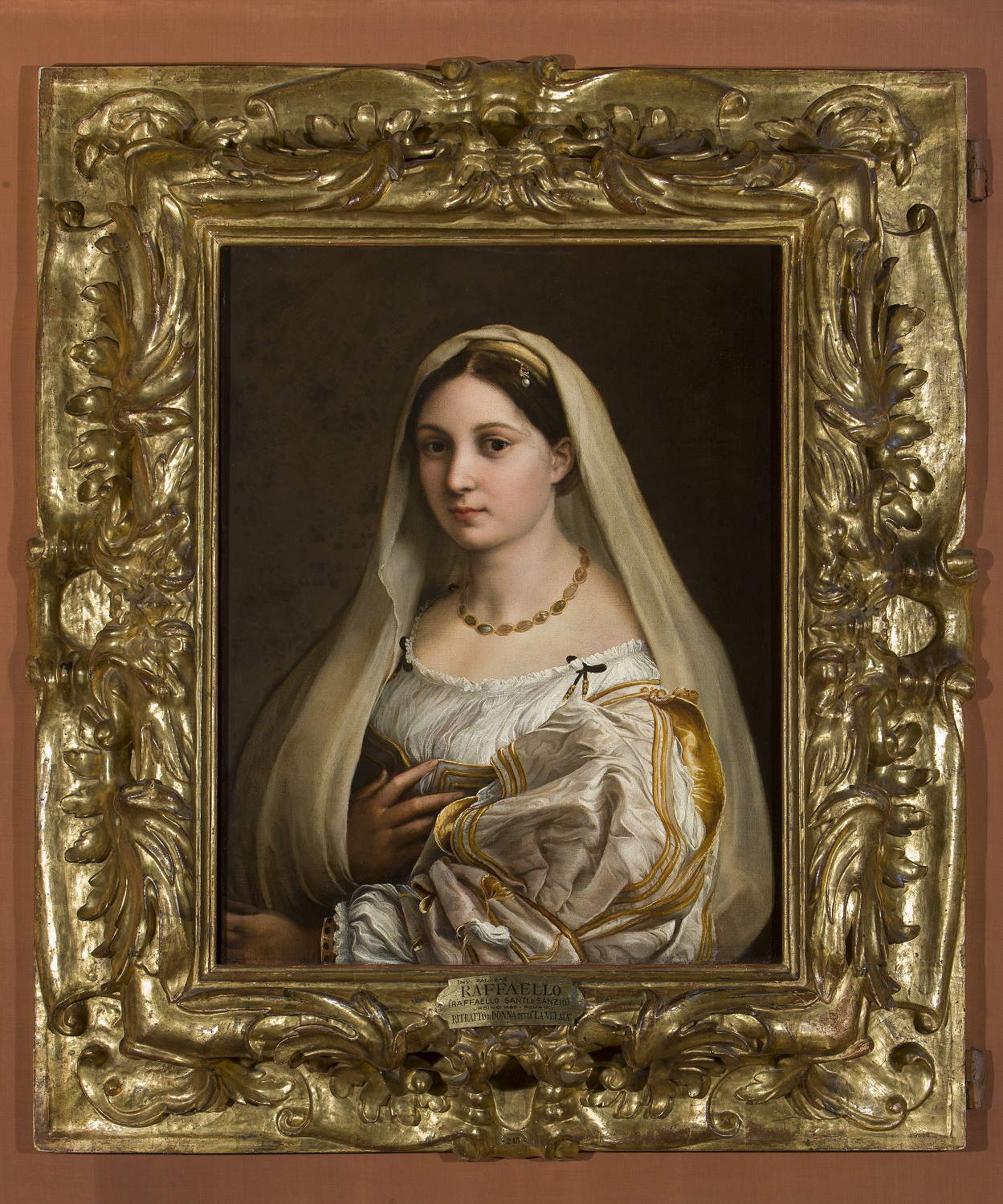 |
| Raphael, The Veiled Madonna (1515-1516; oil on canvas transposed from panel, 82 x 60.5 cm; Florence, Palazzo Pitti, Palatine Gallery) |
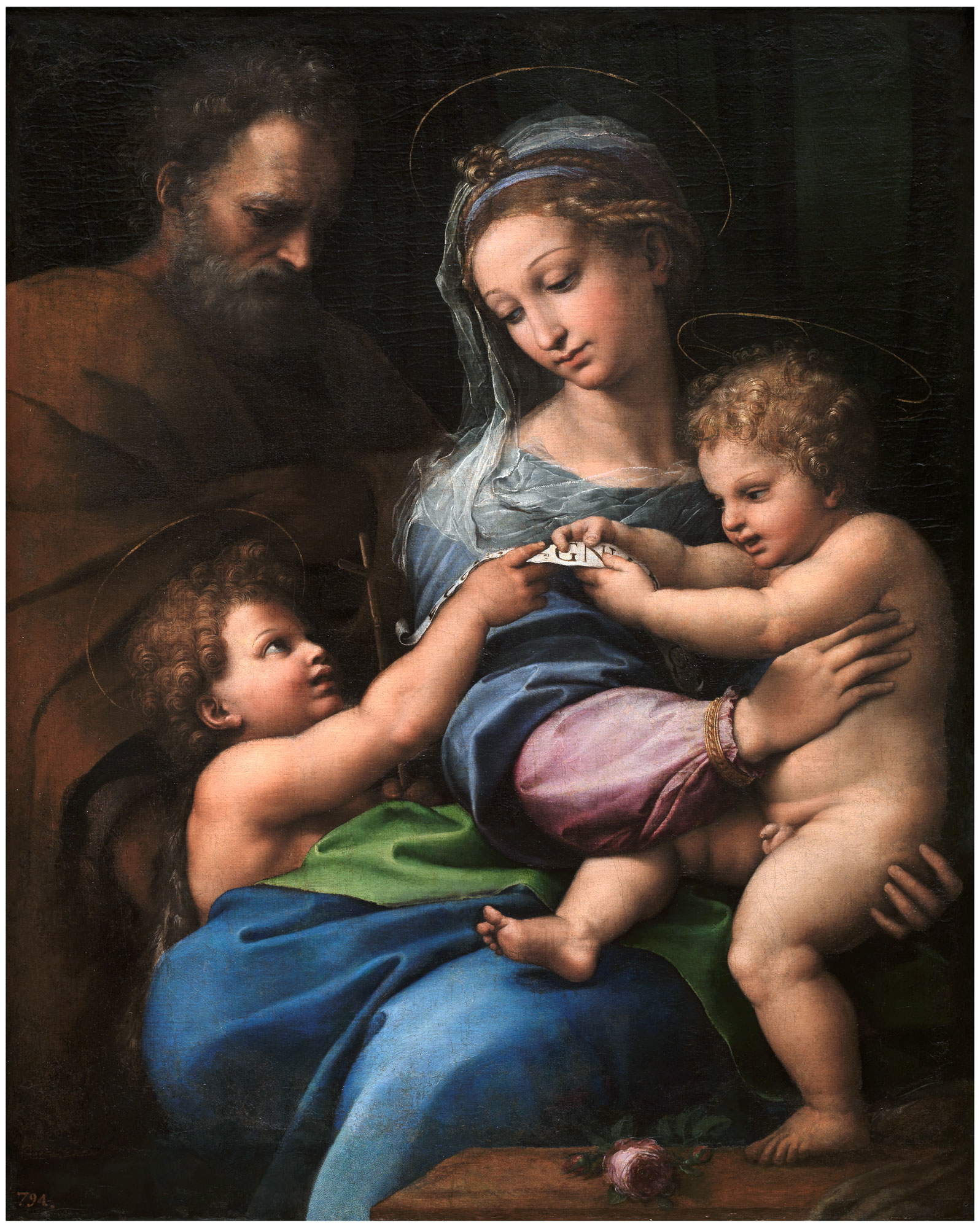 |
| Raphael, Madonna of the Rose (1518-1520; oil on panel transposed from canvas; Madrid, Museo Nacional del Prado). © 2020. Image copyright Museo Nacional del Prado |
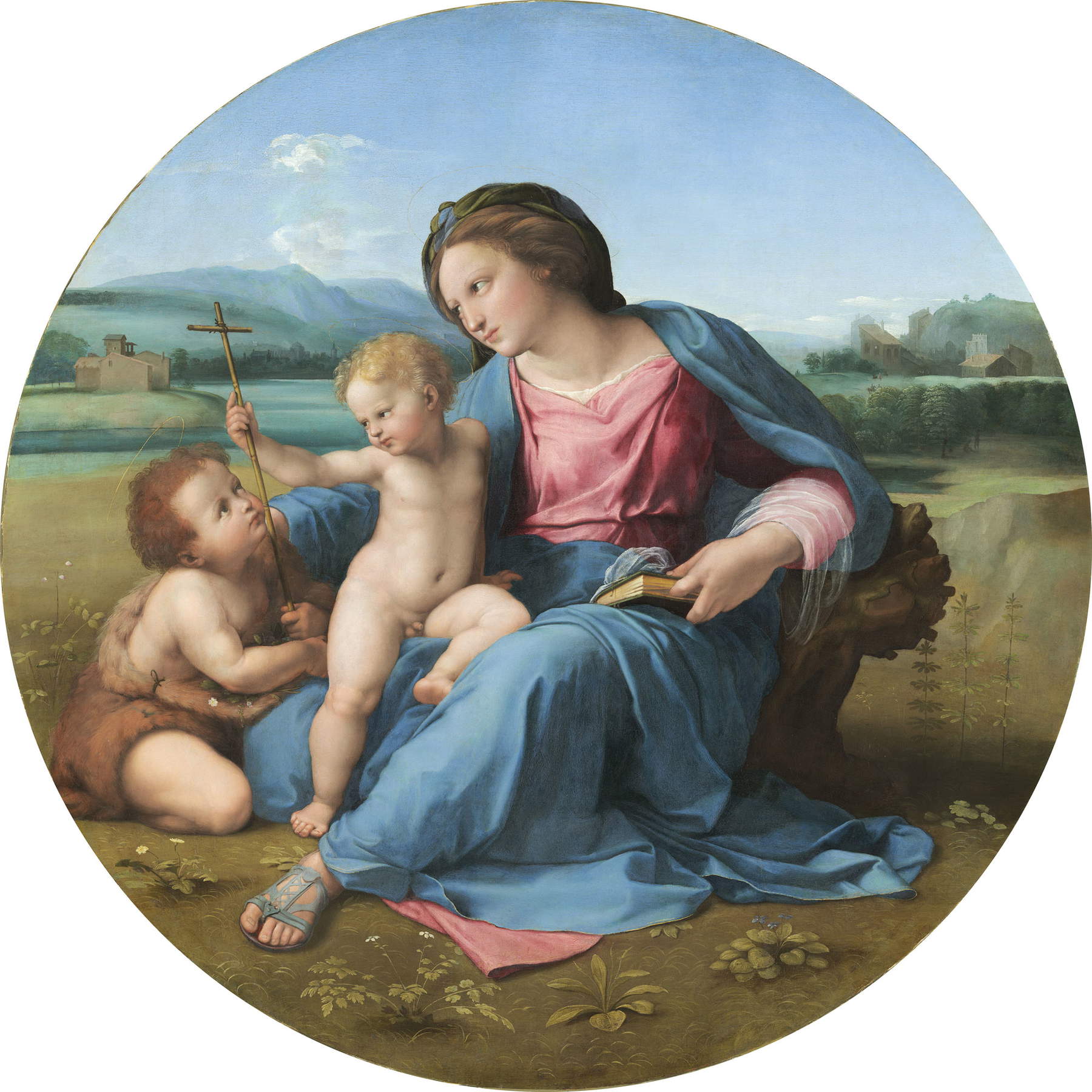 |
| Raphael, Madonna dAlba (c. 1510; oil on panel transferred to canvas; Washington, D.C., National Gallery of Art, Andrew W. Mellon Collection). © National Gallery of Art, Washington |
Warning: the translation into English of the original Italian article was created using automatic tools. We undertake to review all articles, but we do not guarantee the total absence of inaccuracies in the translation due to the program. You can find the original by clicking on the ITA button. If you find any mistake,please contact us.





























